Author: Marshall Schott
For the majority of people who started brewing at home prior to about 2010 (give or take), it was commonplace to transfer the fermenting beer from a primary vessel to a secondary vessel, with popular authors and homebrew shop owners promising it lead to a better finished product. They sold it, we bought it. I’ve a feeling this line of reasoning was almost purely an attempt to model our apartment kitchen breweries after professionals, who usually transfer beer from a fermentor to a bright tank for clearing and carbonation, the main purpose being to free up the fermentor for another beer. Over the last few years, a growing number of homebrewers have started ditching this part of the process and simply packaging directly from their primary once a stable FG is reached.
As with most times of transition, conflict has arisen.
On one extreme are the traditionalists and a few straggling new brewers who swear that racking to a secondary vessel produces clearer beer with less undesired yeast flavors, and that it is especially important when making dry hop, fruit, wood, or other additions. I often wonder where this strong conviction stems from and can’t help but presume that, for the older brewers, it’s at least partially related to personal experience leaving beer in contact with shitty yeast too long, while I’m pretty sure the newer brewers are just doing what they’ve been taught (by the older brewers). At the other extreme are the younger brewers who are more interested in making the most delicious beer they can as efficiently as possible. In my mind, these are the folks who squeeze in brew days around their work and family schedule, their passion for the craft balanced by other life responsibilities. For these people, cutting out unnecessary parts of the brewing process means they get to brew more often because, let’s be honest, our wives notice less (sorry, honey, I can’t bathe the kiddos tonight because I’ve gotta rack a beer from primary to… okay, well, yeah, that can wait, I guess). I know, there are plenty who fall somewhere in the middle, agreeing that primary-only is usually fine for all except the most esoteric of styles, but that’s no fun to write about.
A quick rant: People often and, in my opinion, inaccurately use the term “secondary fermentation” when talking about racking from primary into another vessel. In actuality, the beer is still going through, or in many cases has already completed, primary fermentation, so the second vessel is actually only serving the purpose of storing the beer. Secondary fermentation, as I see it, is what occurs when additions are added to a beer that re-start fermentation, such as fruit, simple sugars, and even Brettanomyces or priming sugar added at bottling. Perhaps I’m way off here or focusing too much on semantics, but thinking about it this way makes my brain hurt a little less.
My understanding is that homebrewers of yore were encouraged to transfer their beer to a secondary vessel in order to reduce the chances of off-flavors from autolyzed (dead) yeast, as this risk outweighed that which came with racking, namely oxidation/staling and picking up an unwanted infection. As yeast manufacturers started providing healthier yeast cultures, positions on the issue changed among some of the biggest names in homebrew including John Palmer and two of the largest commercial yeast companies, White Labs and Wyeast. We brew in an age where more and more people are contending that, like the dodo, so too should the secondary go. In fact, over 50% of respondents to a recent survey I conducted reported they used a secondary regularly when they first started brewing, while a surprisingly low 7% said racking to another vessel is a standard part of their current brewing routine. A relatively large 23% said they never use a secondary, while the remaining 70% said they only transfer when making dry hop/wood/fruit additions (27%), bulk aging a “big” beer (21%), lagering (12%), or aging sours (10%).
Yet the conflict remains. As an admitted primary-only zealot (as a therapist, I’m working with myself on this) who shamelessly encourages brewers to forgo this part of the process, I often receive contentious comments in homebrewing forums, sometimes reaching the level of what I can only describe as ridiculous rage, claiming that I’m only giving one side of the story or whatever. While I’ve made many a batch using a secondary carboy as well as primary-only, I thought it only best to put this debate to the test.
| PURPOSE |
To evaluate the differences between 2 beers using the same wort and fermented with same yeast, one left in primary-only while the other was racked to a secondary vessel.
As with all of these exBEERiments, the primary intent is to parse out the differences when a single variable is changed, not to belittle people who do things differently than me.
| METHODS |
A single 10 gallon batch of the following beer was made and split between 2 carboys post-boil:
Roz’ Red Rye Ale
Batch Size: 11 gal
OG: 1.052
FG: 1.014
ABV: 5%
IBU: 58
SRM: 11
15 lbs US 2-Row
2 lbs Munich 10
1 lbs Rye Malt
1 lbs Honey Malt
5 oz Acid Malt
4 oz Roasted Barley (500L)
15 IBU Summit @ FWH
28 g CTZ @ 10 min
28 g Mosaic @ 10 min
28 g Summit @ 5 min
28 g Mosaic @ 5 min
57 g Mosaic @ flameout (15 min steep)
40 g CTZ @ flameout (15 min steep)
19 g Summit @ flameout (15 min steep)
DRY HOP ADDITIONS REPORTED PER CARBOY
28 g Mosaic @ dry hop (4 days)
14 g Summit @ dry hop (4 days)
14 g CTZ @ dry hop (4 days)
SafAle S-04 Whitbread Dry Yeast (planned on Notty, this was all I had on hand)
Mash at 154°F for 60 min
Chill to 64°F pitch temp, ferment at 66°F
I originally designed this beer to be a very hoppy session Pale Ale, then while gathering the grains the night before brewing, my son grabbed the pail of Roasted Barley and said, “Daddy, we need to put this in there.” Hey, why not? I woke up the following morning and got to producing some wort.

Once in the boil kettle, the wort was a beautiful hue of red and smelled pretty great.
Nearly 1/2 lb of hops were added to the kettle at 10 minutes and flameout.
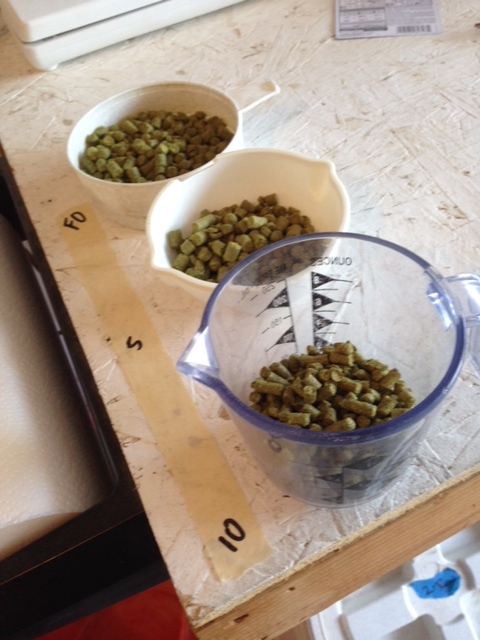
My King Cobra IC made quick work of chilling just over 11 gal of wort– 8 minutes to get from 205°F to 78°F (4°F above groundwater temp).
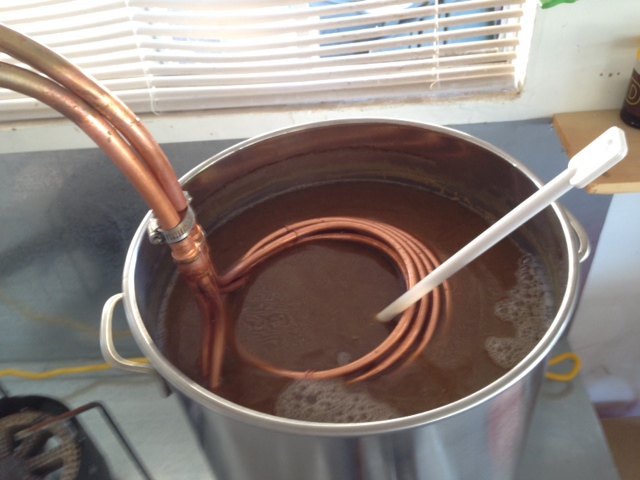
I gently stirred the wort in the kettle while filling each carboy, mainly so that each fermentor received a similar amount of kettle trub, but also because… well, does it even matter?
As is normal during this time of year, I moved the carboys full of wort to the ferm chamber to finish chilling to my target pitching temperature of 64°F, which took about 4 hours, at which point I rehydrated and pitched the yeast. Fermentation proceeded as usual with both beers becoming active at the same time.
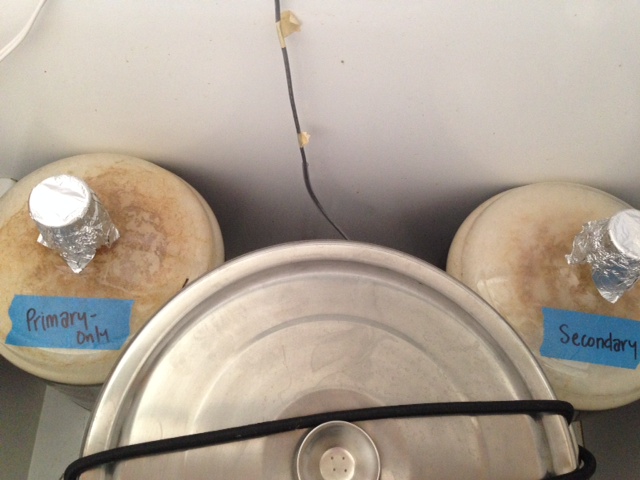
After about 18 hours of fermentation, I woke up to a slight mess.
The other carboy was just about to do the same when I added a couple drops of Fermcap-S, which stopped the foam in its tracks.
I took a hydrometer sample 1 week in to fermentation, the same time I planned to dry hop these beers. Things were looking equal at this point.
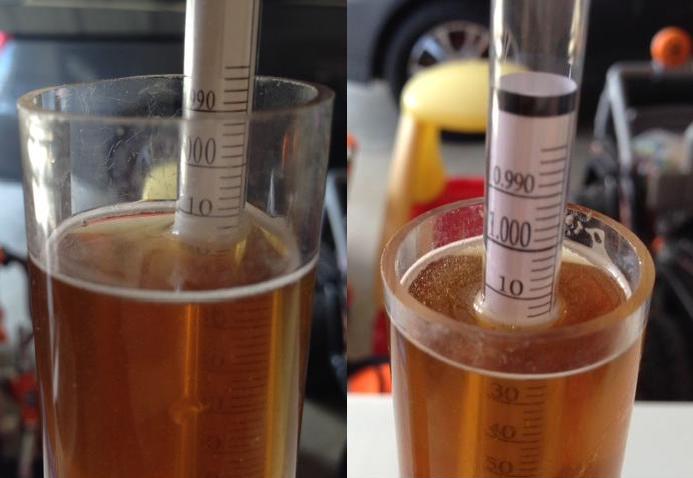
After adding the dry hops directly to the primary-only batch, I added the same amount to a sanitized “secondary” carboy.
Using my sterile siphon starter, I transferred the beer to this new vessel on top of 2 oz of hops.
The secondary carboy was returned to the fermentation chamber where it remained, next to the primary-only batch, for 3 days at 68°F before being crashed to 30°F (2 days). The beers were ready for the keg 11 days after being brewed.
I was surprised with the amount of trub at the bottom of the secondary batch.
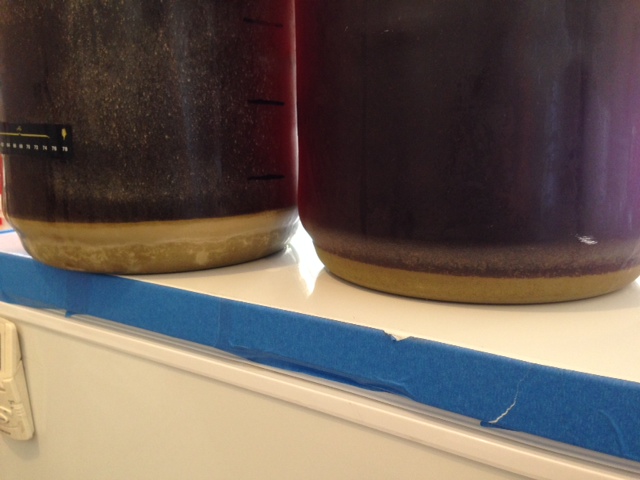
The full kegs were placed on 30 psi of CO2 in my keezer for 36 hours before being dropped down to 12 psi for serving. I pulled a couple samples (after tossing the first few ounces from each, of course) prior to presenting them to tasting panel members.

| RESULTS |
In all, 16 people participated in the tasting panel, all of whom were blind to the nature of the exBEERiment. Each participant was text messaged a link to the survey, which was adapted to increase objectivity and hence the ease of reporting results. Each beer was assigned the name of an astronaut: primary-only was Neil and secondary was Buzz. Each participant received 2 clean glasses that were filled with approximately 4 oz of each beer.
Appearance
– 63% found no difference in clarity, 31% reported Neil as being more clear than Buzz, and only 1 taster (6%) thought Buzz was clearer
– 63% found no difference in color (darkness), 25% thought Buzz was darker, and 13% thought Neil was darker
– 38% found no difference in head retention; 38% thought Buzz was better, and 25% thought Neil was better
– 69% reported the general appearance of the beers to be exactly the same, while the remaining 31% said they were somewhat similar
– Overall, 50% found no difference in appearance, 31% thought Buzz looked better, and 19% thought Neil looked better
Aroma
– 56% thought Buzz had more malt aroma, 25% thought Neil was more aromatically malty, and 19% found no difference
– 56% thought Neil had more hop aroma, 25% thought Buzz had a stronger hop nose, and 19% found no difference
– 38% thought Buzz had more ester/phenol aroma, 31% thought Neil had more ester/phenol aroma, and 31% found no difference
– 56% found no difference in terms of off/unpleasant aromas, 31% thought Buzz had more off-aromas, and 13% thought Neil smelled less pleasant
– 94% (15/16) reported the general aroma of the beers to be somewhat similar, while 1 person (6%) said they were exactly the same
– Overall, 44% thought Neil had better aroma, 38% thought Buzz’ aroma was better, and 19% found no difference
Flavor
– 44% found no difference in malt flavor, 31% thought Buzz was maltier, and 25% experienced Neil as tasting more malty
– 44% thought Neil had more hop flavor, 38% found no difference, and 19% thought Buzz was hoppy tasting.
– 47% found no difference in yeast/fermentation caused flavors, 33% thought Buzz had better yeast character, and 20% thought Neil was better
– 63% found no difference in off-flavors, 25% thought Neil had more off-flavors, and 13% thought Buzz had more off-flavors
– 63% reported the general flavor of the beers to be somewhat similar, 25% said they were exactly the same, and 13% thought they were not at all similar
– Overall, 50% found no difference in flavor, 38% thought Buzz tasted better, and 13% preferred the flavor of Neil
Mouthfeel
– 50% thought Buzz had more body, 38% found no difference, and 13% thought Neil was fuller bodied
– 44% thought Neil had better carbonation, 44% found no difference, and 13% thought the carbonation in Buzz was better
– 56% found no difference in tannin character, 38% thought Neil was more tannic, and 6% (1 taster) said Buzz was more tannic
– Overall, 50% preferred the mouthfeel of Buzz, 38% thought there was no difference, and 13% thought Neil had better mouthfeel
In terms of overall preference, 50% of the tasters reported they preferred Buzz, 25% preferred Neil, and the remaining 25% thought they were too similar to determine a preference.
After answering all of the questions blindly, the tasters were informed of the nature of this exBEERiment and asked to guess which of the beers they thought was racked to secondary. Of the 16 participants on the tasting panel, half (8) incorrectly guessed Neil, 25% accurately guessed Buzz, and 25% thought they were too similar to tell a difference.
Post-ExBEERiment Messing Around
Once all the data was collected and I wasn’t worried about blowing through these kegs of beer, I started serving it to people stopping by. On a few occasions, with folks who hadn’t completed the survey and knew nothing of this exBEERiment, I served the 2 beers one after the other. Once the second glass was empty, I’d ask, “Which one did you like better?” The response 100% of the time was some form of, “I didn’t know they were different.”
My Impressions: I’ve been drinking these beers for a couple weeks now and have had them served to me side-by-side without knowing which was in each cup numerous times. I certainly don’t pride myself on having an amazing palate, though I like to think I’m at least somewhat capable of noticing differences between beers. In my experience, these beers are exactly the same. I get strong dank/onion hop character with a fairly noticeable and pleasant rye character. Both beers have a hop haze that will likely remain until the kegs are gone and they definitely taste like the same beer.
| DISCUSSION |
I purposefully chose to make a dry-hopped beer for this exBEERiment due to the argument that racking on top of hops in a secondary lends the finished beer better hop character. I found it interesting that a majority of tasters actually thought the secondary batch had more malt aroma, while the primary-only batch was perceived as having a stronger hop nose. Even given the more anecdotal nature of these exBEERiments and the relatively small sample size, these results should at least give pause to those who refute the efficacy of primary-only fermentation.
Another common (mis)conception is that racking beer from primary to secondary will hasten the clarity process, which simply does not appear to be true… at all. A single taster of 16 total thought the beer racked to a secondary vessel was more clear, while the large majority noticed no difference between the 2 beers. The fact more people perceived the primary-only beer as being the clearer of the 2 seems to support the notion that clarity is not a function of transferring to a secondary vessel.
Finally, a third popular argument for transferring to a secondary fermentor has to do with getting the beer off of the yeast cake in order to prevent autolyzed yeast off-flavors. While 25% of tasters thought the primary-only beer had more off-flavors in general, most participants reported perceiving no difference between the beers. Moreover, a larger number of tasters (31%) actually reported Buzz as having more unpleasant/off aromas with 38% perceiving it as having more ester/phenol characters, though most noticed no difference.
The biggest caveat to this exBEERiment is the fact it focused on a standard, lower OG, quick turnaround ale. While still debatable and definitely worthy of a future exBEERiment, it is commonly recommended to rack beers you plan to bulk age longer than ~3 months into a secondary vessel in order to prevent yeast off-flavors.
I’m not sure if these results will cause anyone to change their brewing process, which is fine since that was never the point– if you find value in spending an extra 20 minutes transferring beer from one carboy to another, by all means, go right ahead. But please, for the love of all that is good, stop trying to convince people that doing so improves the final beer, it comes across as an uninformed and self-serving ploy to validate your own practices and/or make an extra few bucks off of a new brewer. Again, in no way am I saying people should ferment in primary-only, just that doing so doesn’t appear to negatively impact the finished beer in any significant way.
As always, please feel free to comment or ask any questions. Cheers!
Support Brülosophy In Style!
All designs are available in various colors and sizes on Amazon!
Follow Brülosophy on:
FACEBOOK | TWITTER | INSTAGRAM
If you enjoy this stuff and feel compelled to support Brulosophy.com, please check out the Support Us page for details on how you can very easily do so. Thanks!

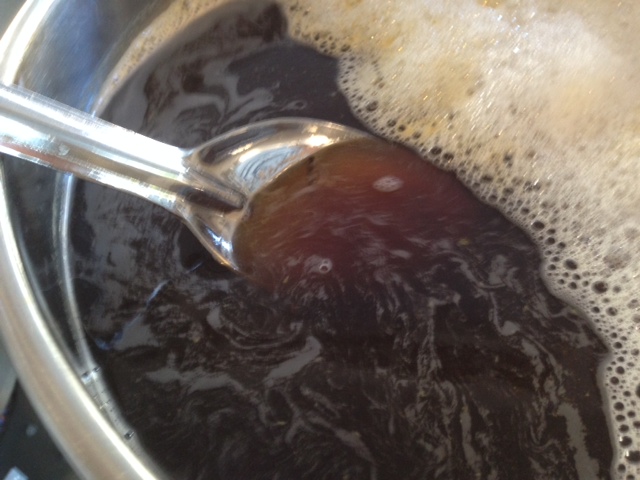
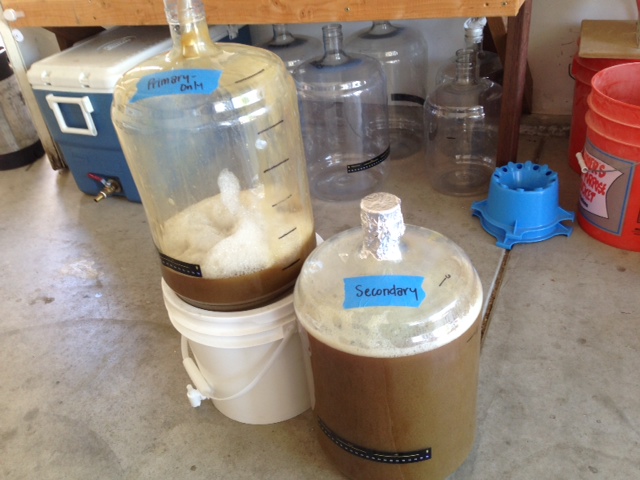
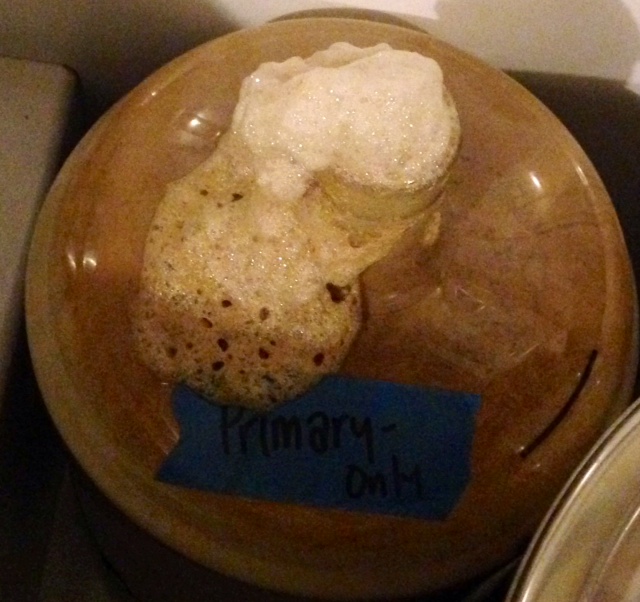
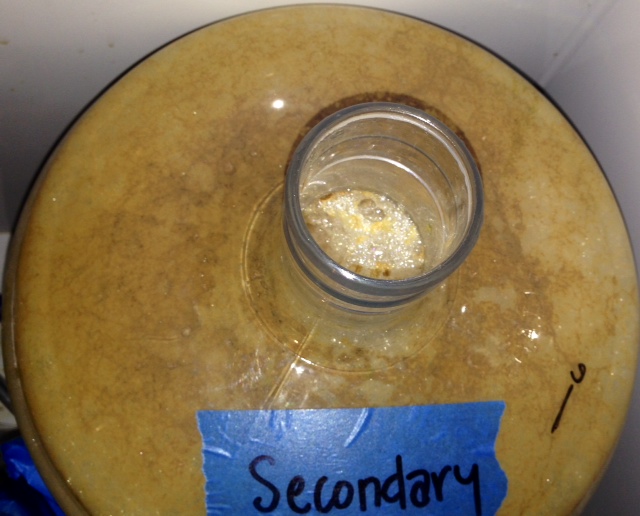
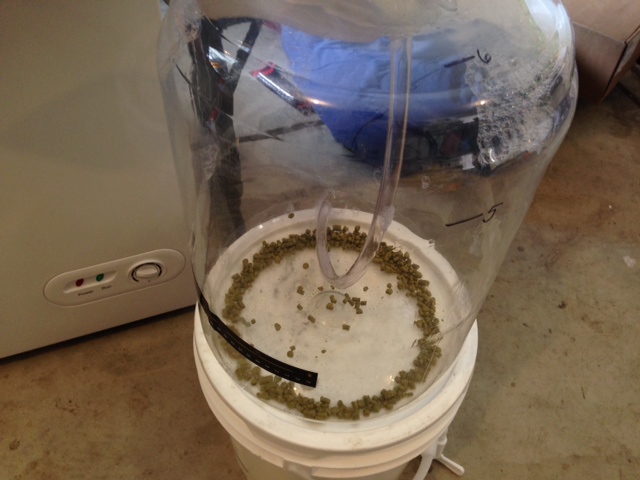
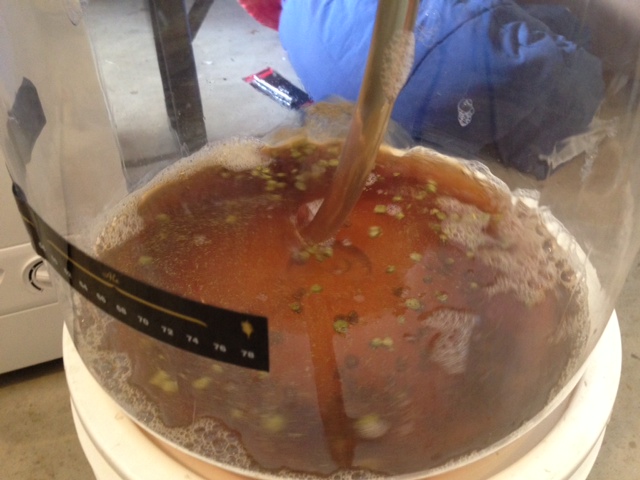










48 thoughts on “exBEERiment | Impact Racking To A Secondary Fermenter Has On An American Pale Ale”
Being a long time secondary person, I have always viewed it as a way to clear up my beers and to prevent less trub from getting into the keg when going directly from primary. I have gone directly from primary to the keg in my younger days and notice that technically I just turned my keg into the secondary as i’ll have to dumb a half-gallon of beer out to clear the sediment that sneaks in during the transfer. I just seem to get more drinkable beer when doing a secondary.
I’m curious. When you kegged the beers, did you have more drinkable beer with Neil? Also, with Buzz, did you have to waste more beer to get it clear when first pouring?
In any case, it’s refreshing to see that there really is no huge difference in the two beers determined my your study. And you are correct. Don’t assume its the best way if you have never tested it.Thanks for the ExBEERiment. It was very educational.
I got the same exact amount of drinkable beer from both batches, maybe a touch less from Buzz due to the small amount I left in the primary when racking to secondary. The amount of shit at the bottom of the keg that I tossed, which is incredibly minimal for me (I’ll say why below), was the same for both batches.
A couple things… first, I cold crash for 2-4 days prior to kegging, which typcially drops a large majority of the particulates out of the beer. Then I always start my siphon from the middle of the carboy and gently lower it as needed, the tip never coming into contact with the yeast cake. Since I’m racking basically clear beer to the kegs and not picking up any yeast along the way, even my first pour is usually relatively sediment free and “drinkable.”
Ah, I see. I don’t cold crash usually so I still have a lot of yeast and stuff in suspension when I transfer. The secondary drops all that out for me. Sounds like my flaw is in NOT cold crashing. I’m going to try your method on this blonde I have going right now. I’ll let you know how it turns out.
I still have a hard time wrapping my mind around how transferring from one vessel to another, without changing temp or anything, would increase clarity at all. The only factor I can think of in my pea-brain that would have an impact is time. Definitely try crashing in primary then kegging clear beer, I bet you’ll never go back!
I’m with Chris on this one, because I use a plastic fermenter and drain from the tap at the bottom of the fermenter instead of syphoning. Using this style of transfer there is a noticeable difference in clarity of the first half of the keg and less to initially pour off. Thanks for the article Marshall I’m going to buy a racking cain and try take the extra work and risk out of the process ☺
I wanna get in on more of these surveys chief! You are a genius when it comes to these ExBEERiments I tell ya!
Oh I and I’m a fan of using secondary only when it serve a specific purpose, like I need the fermentor space, I also get better results when I dry hop in a secondary or even in the primary using a hop bag, I don’t know why but that’s what happens with me.
I hope to bring the next exBEERiment samples to the upcoming meeting, we’ll just have to see 😉
I dry hopped both of these beers pretty heavily and personally can tell no difference. I also don’t use hop bags, ever, for anything. “And I’m freeeeeee, free hoppin’…”
Hmm, I was going to try using hop bags during boil as I’m leaving a lot of wort in the kettle when transferring to the fermentor. I can never get the trub to some compact state in a reasonable amount of time so that I loose less wort. I have tried to filter what remains through a paint strainer bag, but the hop pellets or the break (don’t know which one exactly) clogs it almost instantaneously. Don’t you leave lots of wort in the kettle when not using hop bags especially with so much hop pellets as in this recipe or do you just dump everything in the fermentor?
Read this: https://brulosophy.com/2014/06/02/the-great-trub-exbeeriment-results-are-in/comment-page-1/
Im not sure it matters much on yhe homebrew scale.
#hopsgocommando
I relished the idea of ditching the muslin bag to dry hop with; however, the end result was a clogged dip-tube in my corny keg. How do you dry-hop without a bag and prevent your keg from clogging up with hop sediment?
I made 8 batches of lager for beach trip last year (80 gallons), and it was stacked full in the fridge. I bulk aged it in primary, because moving it to secondary was not easily realistic with the 16 buckets. There was nothing wrong with it at all, no off flavors from yeast, etc. I think if there is anything to yeast issue rumors, it’s at larger scale than a 5gal bucket and possibly higher than lager temps too.
Four years ago, when I started brewing, I followed all of the instructions of my teacher, including racking to secondary. Then I heard whispers of heresy, that I didn’t really need to do it. Being rebellious, I decided to forego secondary to see what happened. I’ve never looked back. Like you, I simply let by beer ferment out and cold crash in the same vessel, then go to keg or bottle. I may, in the future, use a secondary for long term aging. I can see the logic in that.
And for those who firmly believe in secondaries, good for you, too! I will staunchly defend your Right to Rack. It’s not religion, it’s brewing.
Nice exbeeriment!
Very well put, sounds like we’ve a very similar experience. And yes, I too promise to defend one’s Right to Rack!
I’m loving these exBEERiments. It’s refreshing to see real evidence and experimentation instead of speculation and assumption. I really appreciate you taking the time to dispel the myths. It helps make my brewing better and simpler. Bravo!
If you have to add something that traditionally would have been added in secondary like oak chips, or dry hopping, is there any concern with oxygen during the “secondary” period in the primary fermentor because you have to crack it open to add your items?
Oh my word, no, at least I don’t concern myself with things like that. The biggest issue with oxygenation is that it shortens the shelf-life of beer, which is a big issue for commercial brewers, but most of us (I presume) are drinking what we make well before tiny amounts of oxygen are going to ruin it. I’m sure there are those who disagree, which is totally cool, I just think it’s wasted energy to worry about stuff like that. Cheers!
Thanks so much. I’m all for fewer steps and less cleaning. Like you said in your post, most of us are trying to squeeze in brewing activities somewhere in the middle of all the other stuff going on in our lives.
I think most of the arguments like this really boil down to the fact that all of these things–racking to secondary, decoction mashing, brew in a bag, etc–are just tools. Everyone needs to figure out how best to use the tools available to them to make the best beer out of their ingredients and on their setup. If your setup includes high temps and questionable yeasts, or you are doing something out of the ordinary like fruit, a secondary might be for you. If the concerns of additional oxygen and contamination are greater, then go primary only. Just like you wouldn’t build a house in an earthquake zone in the same way you would build it in a flood zone, you don’t always use a secondary.
– Dennis, Life Fermented Blog
Another great exBEERiment! These are always questions I have asked myself. About 10 batches ago I decided to stop racking to a secondary, advice which I received from a pro brewer. First of all it was the extra time and second of all, a couple of IPAs came out with near no aroma. In the end I decided that without being able to purge the secondary of all O2 it was a waste of time and money. Since then I’ve been dry hopping in the primary fermenter and my beers are turning out much better.
I wonder if you had not cold crashed whether there would have been noticeable differences in clarity. Just playing devil’s advocate here. Now for an honest question- are there any perceived differences in beer quality, aroma, clarity….. when kegging versus bottling. I might be curious to see how these results would have looked with no cold crashing and bottling. I don’t anticipate that I will be kegging, nor cold crashing or using a fermentation cabinet in the near future, but once I have the capital I will certainly consider it.
I like your thinking, though I’d guess that cold crashing isn’t the primary factor here and that, assuming both beers were treated similarly, the results would match those reported in this exBEERiment. There’s nothing magical that happens as a result of transferring beer that would cause particulates to drop-out any faster (better?). In my opinion, the key is leaving as much of the trub behind as possible, which I do by starting my siphon from the middle of the carboy and lowering it as needed. Also, the cake in the primary-only carboy was definitely more dense than the one in the secondary, leading me to believe the risk of sucking up trub is actually lower in the primary than in secondary.
In my experience, bottle conditioning does seem to impart a noticeable flavor, certainly not a bad one, just a bit different than kegging. I have plans to do a simple force vs. bottle carb exBEERiment, stay tuned. Cheers!
Great article and great comments! I do both, so I can’t defend either way. I generally rack to a secondary for the sake of sediment and clarity. I always siphon from the middle, so whatever large particles are left generally fall down to the lower part of the carboy. The bottom of the carboy really helps keep the large particles away from the middle. I have had kegged homebrew with sediment in it and I can’t say I am a fan. I never have sediment when I keg at home and only waste the first half pint. I generally keep some beer in the carboy ready to keg, so I feel more comfortable leaving in the carboy for a month or longer versus the primary. On the same note, there have been batches I have left in the primary for a long time out of laziness or lack of spare time and I have never noticed any off flavors.
Again, great article and great comments.
Another fine entry, guy!
I struggle with aroma-poor IPA’s with primary only fermentation/dry hopping schedules. I’ve noticed that even if I’ve reached TG (same gravity measured over 3 days) the fermentor belches residual CO2 for several days to a few weeks. I suspect that escaping gas is inadvertently scrubbing the beer of desirable hop derived volatiles during dry hopping.
Potential solution: rack to another vessel thus facilitating the degassing process, but make sure to purge that vessel of O2 first. All right beer nerds, tell me why this won’t work?
Keep up the good blogging, M!
Cheers,
Dan
Haha. Well, based on my experience, the difference is unnoticeable, and the results of this exBEERiment seem mostly to support this. Thanks for the support, cheers!
You’re probably not going to have much CO2 leaving solution if you cold crash your fermenter after CO2 production has stopped; if anything, you’ll suck headspace CO2 back into the beer. If you don’t cold-crash, I can see this being far more of an issue.
Reblogged this on Justified Brewing..
I found your website yesterday while a buddy and I were brewing our first SMaSH. I really like your experiments and the level headed thought that goes into them. Regarding this topic, I can give you a very simple reason why I rack to a secondary, and that’s because my primary is a 6.5 gallon bucket, as opposed to a carboy. Despite the arguments presented by many naysayers, I like the bucket for primary, but I do concede that it may not be the best for long term aging of imperial stout, especially with that large head space. It’s so easy to clean the bucket, and racking doesn’t get any easier than turning a valve. Yes, some gunk makes its way the carboy, but whoopty do. Racking out of my bucket is needed if I want to brew again before I’ve emptied a Corny Keg, but for lighter beers especially I will go straight to a keg if i can.
I’m glad you found the site, thanks man! As I’d imagine many people do, I completely agree that long-term aging (4+ months) is best done off the yeast cake… unless it’s a sour. I used to use spigoted buckets and now exclusively use plastic carboys, which I’ve found to be easier to clean (OxiClean, hot water, 1 hour) and just as easy to rack using the sterile siphon starter. Regardless, my guess is the quality is more a function of the brewer, not the fermentor, though I still have a bucket vs. carboy exBEERiment on the list 😉
I’m in Australia, and over here seems to be the opposite. Most people don’t bother transferring to secondary vessels, it has never been commonplace in home brewing here. Possible exceptions being when planning to store it for a long period before bottling or whatever, or for bulk priming. Otherwise, it’s all done in the primary.
I transfer to a secondary at bottling time, as I bulk prime, i.e. mix up the priming sugar for the whole batch in boiling water, dissolve, dump into secondary then rack the beer onto it. Way easier than messing around measuring out sugar for each individual bottle.
It’s sort of necessary to transfer if you are bulk priming, doing it in primary is only gonna stir up the trub, but this is the only reason I do it. Nothing to do with clarity or setting shit out or anything as I also cold crash my beers for about a week or so before I bottle them. None of the trub makes it across to the “bottling bucket”, or if any does, it’s so minimal that it isn’t even noticeable.
Cheers
Since around 2008, perhaps not “the majority”, but certainly many homebrewers here have eschewed the practice of a transfer to another vessel – “a secondary” seconday what? More like a mini bright tank – but the trend had been slow.
Many homebrewer’s first introduction into the hobby is via a home brew shop and/ or just a kit with an instruction sheet probably formulated in 1995.
I currently know more brewers who do NOT perform a transfer to a minibright (secondary).
I’d be interested to see this repeated without a cold crash. I’ve always doubted that racking to secondary to prevent autolysis if oxygen levels and pitch rate are appropriate is necessary. But if using a secondary causes a difference in clarity, I would guess that a cold crash would even out the clarity of both beers. For brewers without a temperature controlled fermentation chamber, a secondary may still be a good option.
Interesting. I’m a pre-2010 homebrewer [actually, a pre-1990 homebrewer] and I sometimes rack to secondary, and sometimes not. It depends on the beer. For high-gravity Belgians, meads, or highly-hopped beers, I do it. All others I generally don’t. But the primary vs. secondary thing is not religious for me. There are some beers that I’ve been making the same way for a very long time. They go into the secondary because that’s how I’ve always done it, and I don’t want to mess with success.
I’ve loved reading your experiments and it has definitely informed my brewing…
Question: Given your results, when doing a secondary fermentation (with fruit, honey, maple syrup, etc.), why not do that in the primary as well? would fermentation get too crazy?
That’s exactly what I do, haven’t used a secondary for anything in years (except for this xBmt).
I have never ever used secondary but always have a twinge of guilt for not doing so-almost everyone says it should be done. I am just basically lazy and although I enjoy brewday I hate the tedious bits like cleaning and transferring.
Seems like I was right all along-*smug*.
No secondary for a while now for me. To me, the whole argument around secondary helping the beer mature falls flat on it’s face when you start considering your keg as a bright tank. Even if a little throb gets into the keg, if it’s stored at serving temperature (or even warmer) and never moved around, the beer will get very clear. The first glass might have a little haze but I fail to see how the secondary + another transfer to key would help anything (aside from specific situations like adding wood chips or fruit, etc. that would make a huge mess in a keg, beer line and tap).
On top of that, the keg is definitely air tight (and oxygen gets pushed out when you carbonate and let some go out) and not a photon gets through. One can leave the keg a weeks for the beer to mature and voila.
Hey guys thanks for all your efforts. I’ve been beating myself up over pros and cons of this issue. I believe you have satisfied my questions. But. One sort of related question.
If I am going to save my yeast cake at the bottom of the primary vessel? (The down and dirty way, just scoping it into mason jars with a couple inches of beer on top, trub and all and putting it into the reffer). Do you think it would be better if I kept my dry hops in a hop bag? I think there may be a couple of exbeeriments above? Also related. To squeeze the hop bag or not? Both in the wort and prior to kegging.
I’m only a year into the beer thing and loving it.
Thanks again.
I’m not sure it’d be better, though possibly “cleaner.”
I transfer wort to secondary fermentor for the first time and put in second fermenter dry hopper (cylinder of stainless mash) with hop pallets. Do I need to to stir up wort to give hop better extraction?
Second, on force carbonating you set pressure to 30psi and it drop down to 12psi. Do you reduced pressure on regulator or it drop becouse co2 was desolve in beer?
Thanks,
Velja from Serbia
Don’t stir, only increases risk of oxidation.
To burst carbonate, set pressure to 30 psi and leave it on the keg for a day before actually purging the keg and turning the psi down to 12.
Great write-up. I use a conical so I don’t need to worry about transferring. I close up the collecting jar at the bottom and remove the trub. But before having the conical, I did just eat up what the local homebrew shop said about transferring, but never did the comparison.
By the way, I think it would be easier to read your data in bar graph format. Thanks.
Great read. I will continue to use a secondary carboy but for other reasons. Firstly, I like to primary in my ale pale bucket. The larger headspace makes it less likely to have blowouts and its easy to carry. Secondly, I like to use a carboy to coldcrash and keg from because of the little bump in the center of my carboy keeps my siphon out of the trub and yeast and means I don’t have to stand there for 20 minutes holding a siphon tube (though I have to do it going to secondary but I’m not as picky about getting some yeast and stuff in there). Thirdly, since I like to do primary in a bucket, it frees my bucket up so I can get a second beer going and frees up my main vessel.
So I agree with you that a secondary doesn’t make better beer. But for me and my operation it makes it easier for me to make better beer and allows me to make more beer the way I like to make beer.
I know this is an old experiment, but I just finished listening to the podcast on this. In that podcast, you ask why the advice of using a secondary is usually given. You touched on maybe it came from large scale breweries. I agree that’s possible. I also wonder if home wine kits contributed to this… Wine kits advise transferring to a secondary vessel partly to ‘clarify’. Also it’s in this vessel where the wine is degassed (stirred vigorously), to remove the co2. Doing this in the primary would stir up the wine trub. I suspect people who make wine at home will at some point move to beer kits. It seems logical to keep the steps as similar as possible, and reuse as much equipment as possible…. Just a thought.
I realize I’m late to the party here. But one of the most interesting findings is barely touched on in the conclusions section?
“In terms of overall preference, 50% of the tasters reported they preferred Buzz, 25% preferred Neil, and the remaining 25% thought they were too similar to determine a preference.”
That is really interesting that despite the primary only beer “winning” in a lot of micro scale individual characteristic evaluations, when evaluated at the macro scale the beer that went through secondary appears to have been greater than the sum of its parts and was overall preferred to the primary only beer by a 2:1 margin. And the primary only beer was preferred at about the same rate as those who couldn’t tell them apart.
That seems like a pretty important detail as many of the debates about primary vs secondary proponents often focus on individual characteristics to justify there decisions (although some are more honest and cite tradition, convenience, and/or anecdotal personal experience that may not carry over to others processes.
Anyway, don’t think the results should cause anyone to drastically change their process, but I found the overall results to suggest that the new wave of primary only zealots should pump the brakes a little bit.
Great work as always.
Greetings! I realize this is an old post, but I have a related question and was wondering if you have done this, or thought about it. In any case, I’d be interested to hear what others think.
It’s quarantine time and I’m running out of lager yeast. I have enough for one batch, but want to make two: A Helles and a Vienna. I have reused yeast cakes before and my results were supbar; since then I only use yeast once. However, I got an idea to reuse yeast that is still in primary/actively fermenting and haven’t decided if this is a good idea or not.
Here is what I am thinking: make the Helles first, then after a few days when fermentation is active, rack the beer to another vessel and then rack the 2nd batch onto the 3/4-day old yeast cake. My thinking is that transfecting the beer during active fermentation into another vessel will have enough yeast to fully ferment and won’t oxidize, and that the yeast cake, since it is in the early stages of fermentation, will not have trub/dead cells that may impart undesirable flavors. I think this could be a win-win for 2 batches out of one batch. I could be absolutely wrong thou.
Good exBEERiment. Thanks for putting yourself in the line of fire in the name of science, and thanks for sharing.